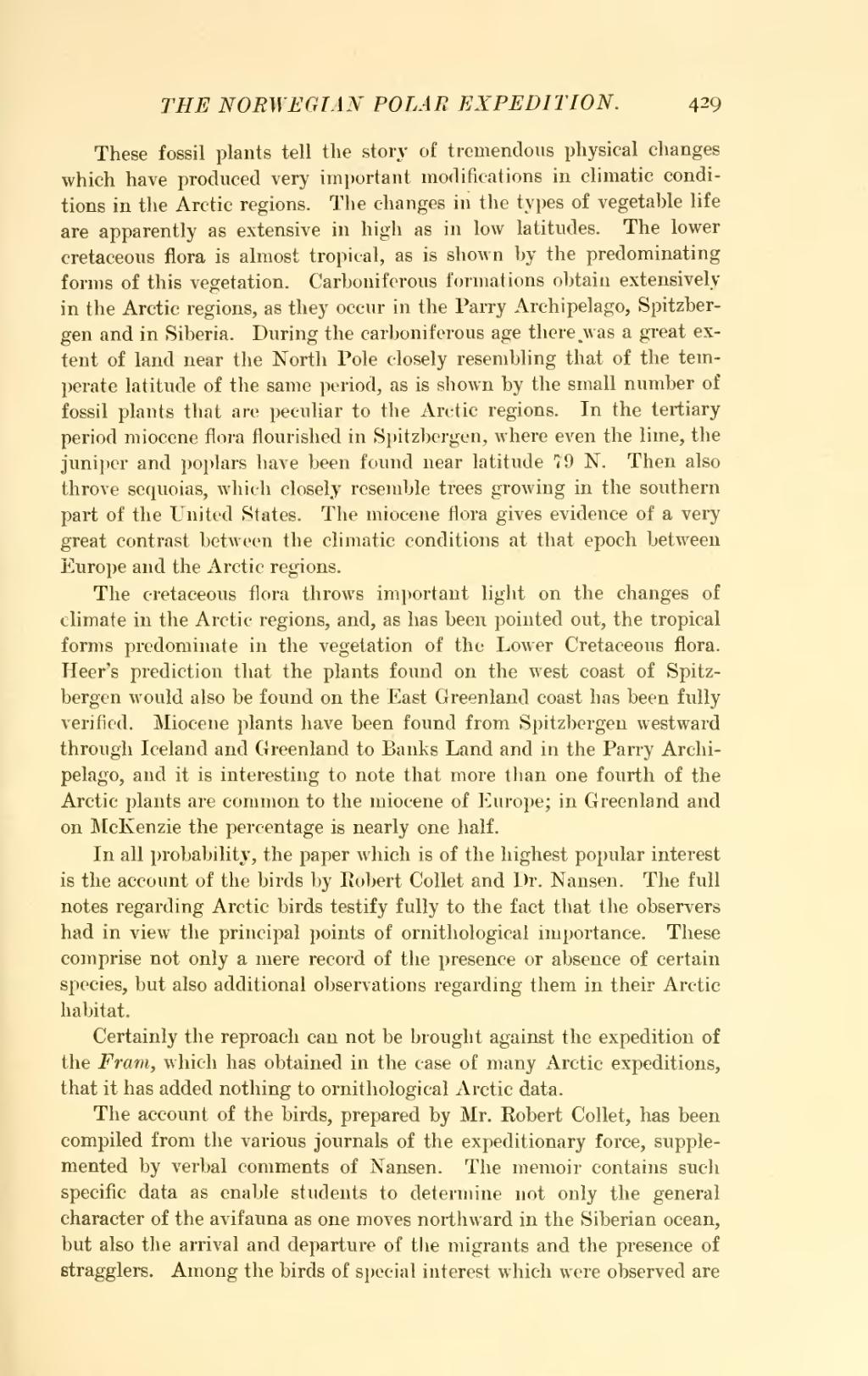These fossil plants tell the story of tremendous physical changes which have produced very important modifications in climatic conditions in the Arctic regions. The changes in the types of vegetable life are apparently as extensive in high as in low latitudes. The lower cretaceous flora is almost tropical, as is shown by the predominating forms of this vegetation. Carboniferous formations obtain extensively in the Arctic regions, as they occur in the Parry Archipelago, Spitzbergen and in Siberia. During the carboniferous age there was a great extent of land near the North Pole closely resembling that of the temperate latitude of the same period, as is shown by the small number of fossil plants that are peculiar to the Arctic regions. In the tertiary period miocene flora flourished in Spitzbergen, where even the lime, the juniper and poplars have been found near latitude 79 N. Then also throve sequoias, which closely resemble trees growing in the southern part of the United States. The miocene flora gives evidence of a very great contrast between the climatic conditions at that epoch between Europe and the Arctic regions.
The cretaceous flora throws important light on the changes of climate in the Arctic regions, and, as has been pointed out, the tropical forms predominate in the vegetation of the Lower Cretaceous flora. Heer's prediction that the plants found on the west coast of Spitzbergen would also be found on the East Greenland coast has been fully verified. Miocene plants have been found from Spitzbergen westward through Iceland and Greenland to Banks Land and in the Parry Archipelago, and it is interesting to note that more than one fourth of the Arctic plants are common to the miocene of Europe; in Greenland and on McKenzie the percentage is nearly one half.
In all probability, the paper which is of the highest popular interest is the account of the birds by Robert Collet and Dr. Nansen. The full notes regarding Arctic birds testify fully to the fact that the observers had in view the principal points of ornithological importance. These comprise not only a mere record of the presence or absence of certain species, but also additional observations regarding them in their Arctic habitat.
Certainly the reproach can not be brought against the expedition of the Fram, which has obtained in the case of many Arctic expeditions, that it has added nothing to ornithological Arctic data.
The account of the birds, prepared by Mr. Robert Collet, has been compiled from the various journals of the expeditionary force, supplemented by verbal comments of Hansen. The memoir contains such specific data as enable students to determine not only the general character of the avifauna as one moves northward in the Siberian ocean, but also the arrival and departure of the migrants and the presence of stragglers. Among the birds of special interest which were observed are
